We here at MD—and we’re sure most of our readers will agree—believe what the great actor Fernando Llamas once said—it is far better to look good than to feel good. And we all know that the reason we got into riding is to look good.
“Looking good” has different meanings as we travel through the decades. In the early ’70s, that meant looking like Peter Fonda and Dennis Hopper, so we limited the functionality of our motorcycles by installing rigid rear ends, raked-out forks, peanut gas tanks and small, hard seats. But we looked so good. In the ’80s we had to look like Tom Cruise in Top Gun, so we’d wear drafty flight jackets on our 150-mph sportbikes. By the early 2000s we had lost our way, suffering through a decade of high-function machinery, so we reverted to the bad-ass rigid chopper thing, except with better paint and less use of rebar as front suspension.
That got old, but luckily, some brave pioneers—you know they are pioneers because they wear Western-themed clothing and have beards—resurrected the cafe-racer movement. These motorcycles are styled after home-modified, performance-oriented British bikes from the ’50s and ’60s, with the current wave utilizing less expensive Japanese bikes from the ’70s and ’80s . These modified bikes sport rearset footpegs, low clip-on or clubman bars and minimal seats. Engines are modified to be faster—and much louder—than stock, and suspension is upgraded for better handling and cornering clearance.
Wow! That sounds complicated, like you’d have to know a lot about riding and wrenching on motorcycles to properly modify yours. Luckily, the Internet is blessed with millions of experts, all with sound, scientifically proven advice on how to restore, repair and modify your old motorcycle. Even luckier, Craigslist and eBay have plenty of stock machinery from that era for you to experiment on—nothing’s more boring or more suitable for modification than a clean, good-running stock bike. What did those engineers with their pretentious PhDs and fancy sliderules know, anyway?
That’s the spirit at Ichiban Moto. Since the summer of 2013, this small, independent builder tucked away in the Midwestern hinterlands has kept it real building bad-ass motorcycle. Ichiban’s videos keep it real, showing the everyman the tools, tips and tricks that are sure to get your custom project on an authentic cafe-racer site like Return of the Cafe Racers or Bike Exif.
But what’s really going on at Ichiban? How authentic is it? Can I be like Ichiban? How much will it cost? What kind of clothing do I need? Can I buy a t-shirt? To find out, MD found enough money in its editorial couch cushions to book a flight, meet that guy from Ichiban Moto himself at a hotdog stand and find out.
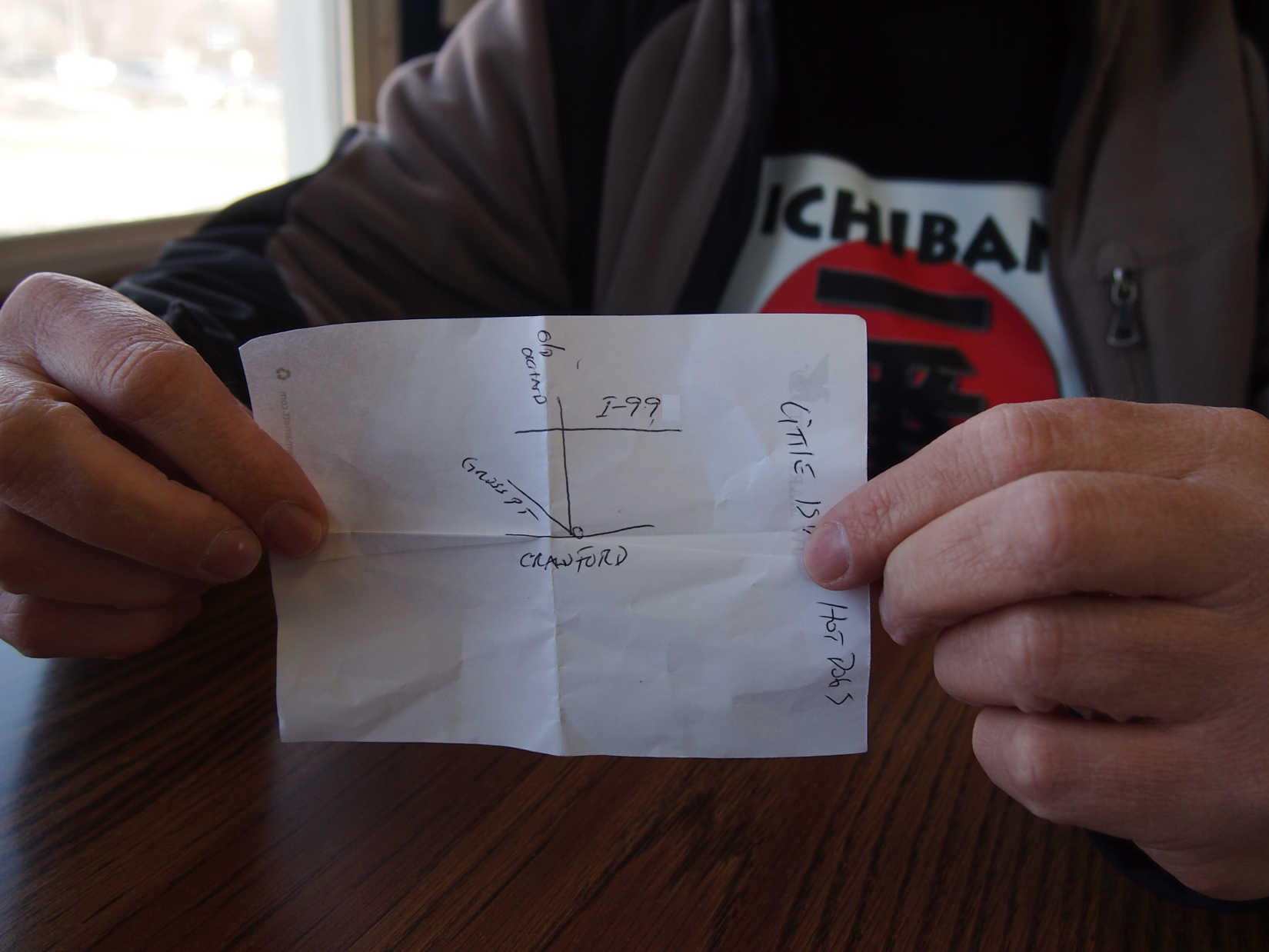
The guy from Ichiban’s talents aren’t limited to mechanical modifications—he can build sophisticated electronic devices as well. Here he shows us his home-built GPS system.
In person, the guy from Ichiban Moto is a modest, average-looking guy, authentic and unassuming. I offered to pay for lunch, but he politely refused, pulling a can of tuna fish out of the back pocket of his jeans instead. He opened the can, drained it into a potted plant and dressed his tuna salad with the mustard and mayonnaise packages pilfered from the condiment bar and ate it with the free crackers for the chili. This got us kicked out of the hot dog shack halfway through the interview, so we conducted the rest in the parking lot in sub 30-degree weather.
MD: What is Ichiban Moto and what do you do?
I build bad-ass custom motorcycles for potential customers. As soon as I start the build, I use the videos and photos to pre-sell the build on Craigslist. That will allow the customer to pick their paint color and when I learn how to do upholstery, they can pick the material. If they want leather, I have an old lady’s coat, for instance. If they want vinyl, I can source that (at this point he is running a practiced hand along the vinyl seat of our booth in the restaurant).
Why not buy materials?
There’s no reason to. That’s as silly as buying tools. Every tool in your toolbox is a specialty tool, even a screwdriver is screw specific, so there’s no reason to buy tools if you can make them or find what you need. I made my own sonic cleaner, metal polisher, blasting cabinet and dozens of hand tools I use every day. And the dumpster is your friend.
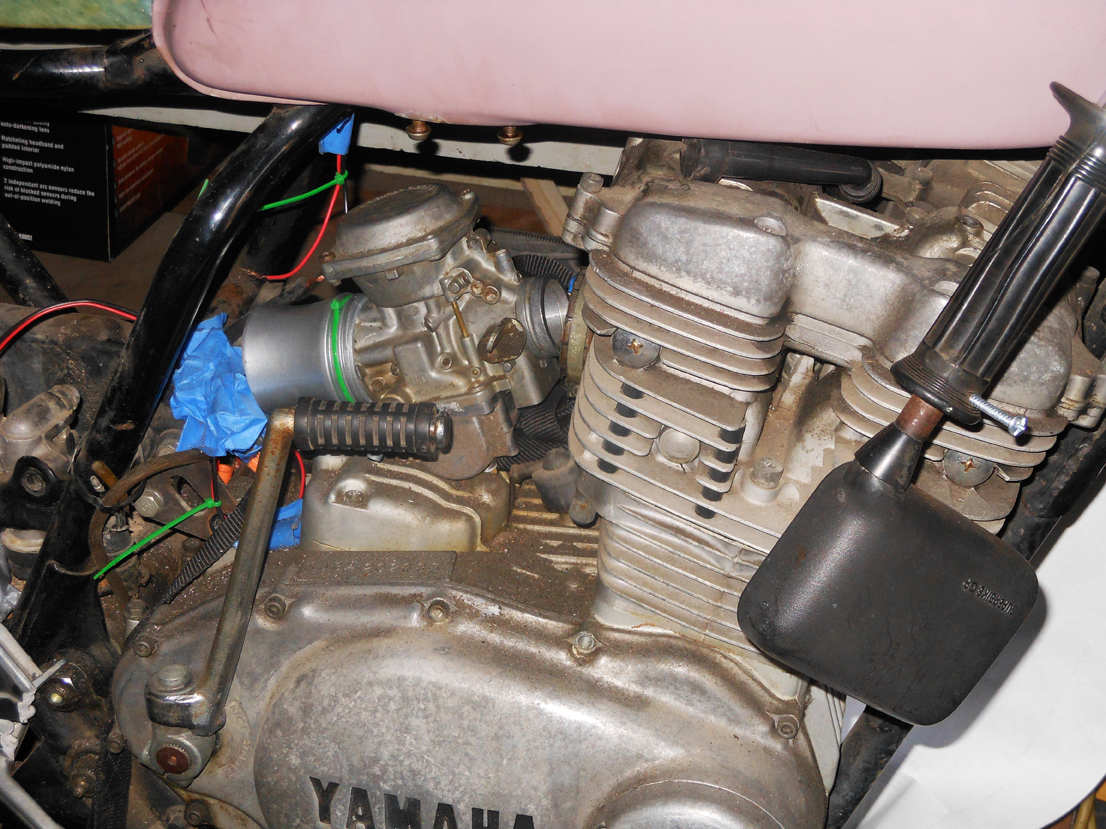
Velocity stacks and bar-end mirrors: all hand-built from found objects.
What about safety?
Well, I’m a one-man shop, and not OSHA certified, but I wear safety attire and point it out in my videos, goggles, gloves and apron, sometimes even a face shield over my goggles for extra protection.
Are you hiring?
Well, I’d like to once business gets rolling.
Is experience required?
No, if they’re willing to learn, I can teach them techniques, like how to make tools. I want someone who’s interested in the café lifestyle, and interested in the process of making bad-ass bikes.
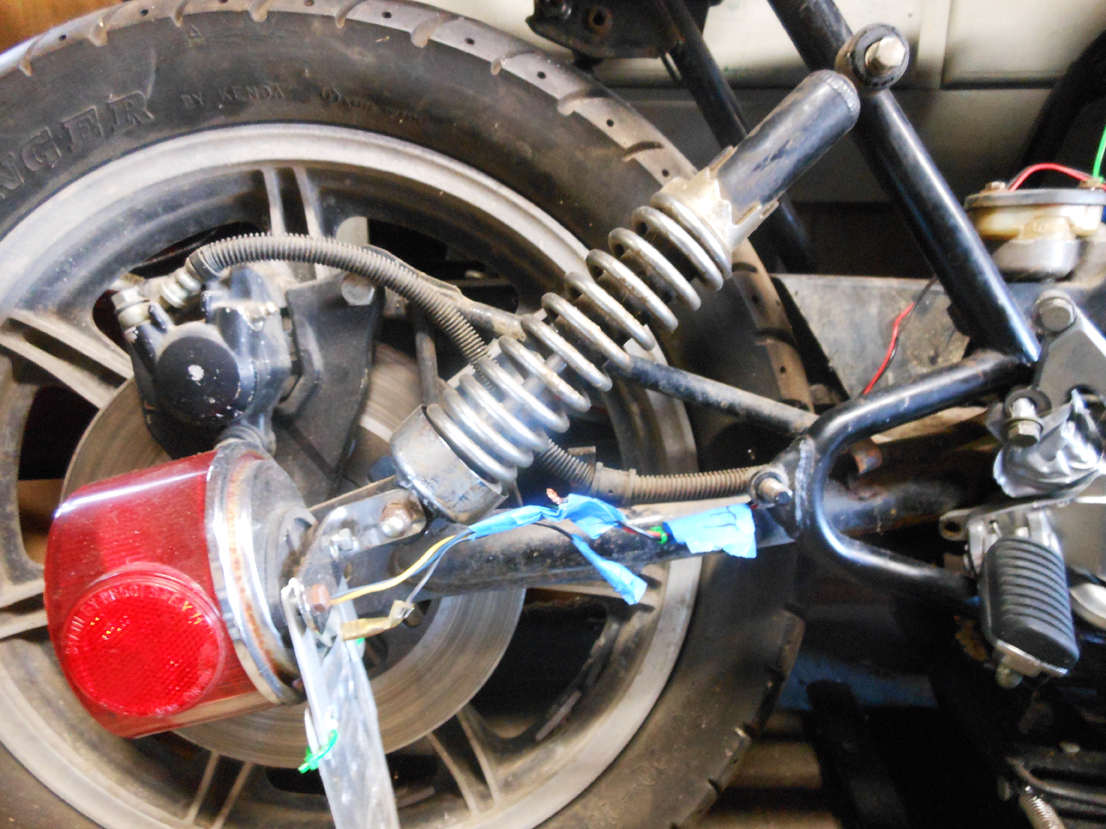
Lowering your shocks, fabricating a bad-ass low-mount tail light and constructing custom rearsets are essential for the cafe-racer look. Ichiban can do it all for less than the cost of a 12-pack of domestic beer.
I know it’s foolish to spend money on a new motorcycle, but if money were no object, what would be the ideal motorcycle?
I wouldn’t buy anything new, ever. If I had money, I’d buy something old. I don’t like anything with modern electronics. Maybe a ‘70’s Honda Hawk 400, you know, something rad.
What do you ride?
I don’t have a running bike. I have a few motorcycles, but they’re mostly in pieces. I’m hoping to sell this project so I can fund a build for myself. But I don’t ride. I hope to learn how to ride someday so I can test-ride completed projects, but right now I’m more a bad-ass builder.
What’s your business goal?
I want to build Ichiban moto up and sell the company and then start another company.
So you would build the company up so you could sell it and start another company that did something different?
No, I would sell my company so I could start another company that did the same thing. And if it did the same thing well, then I would be building a company that would be starting a company and selling companies. And that sounds like a business success to me—building kick-ass companies.
Where does your understanding of motorcycle engineering come from if you haven’t ridden?
The Internet. I read the motorcycle forums. If I need to do something, I Google it, it takes me to the forum and I read it. What’s awesome is I can then post my results to show other people how to do it.
How do you know the good information from bad?
I give it a try. If it is bad information that results in a fail, I scrap it. If the information is good, then I have a successful modification or step in the process and have something great to put in my YouTube videos.
What are your goals for the year?
First, I want to finish my project. Next, I want to grow a proper beard and get some skinny jeans and a nice jacket, maybe some combat boots or Converse sneakers and a vintage helmet. Maybe tailor my current jeans into skinny jeans, since I have to learn how to upholster. I can use the extra material to upholster my upcoming brat build.
After that, I need to learn to do Photoshop so our bikes can compete on sites like Return of the Cafe Racers or Pipeburn. You have to be good at Photoshop to meet those expectations. Next, I’ll get my Ichiban branding video on a hipster bike-video site and finally sell the bike to someone who owns a clothing store so they can put it on the wall.
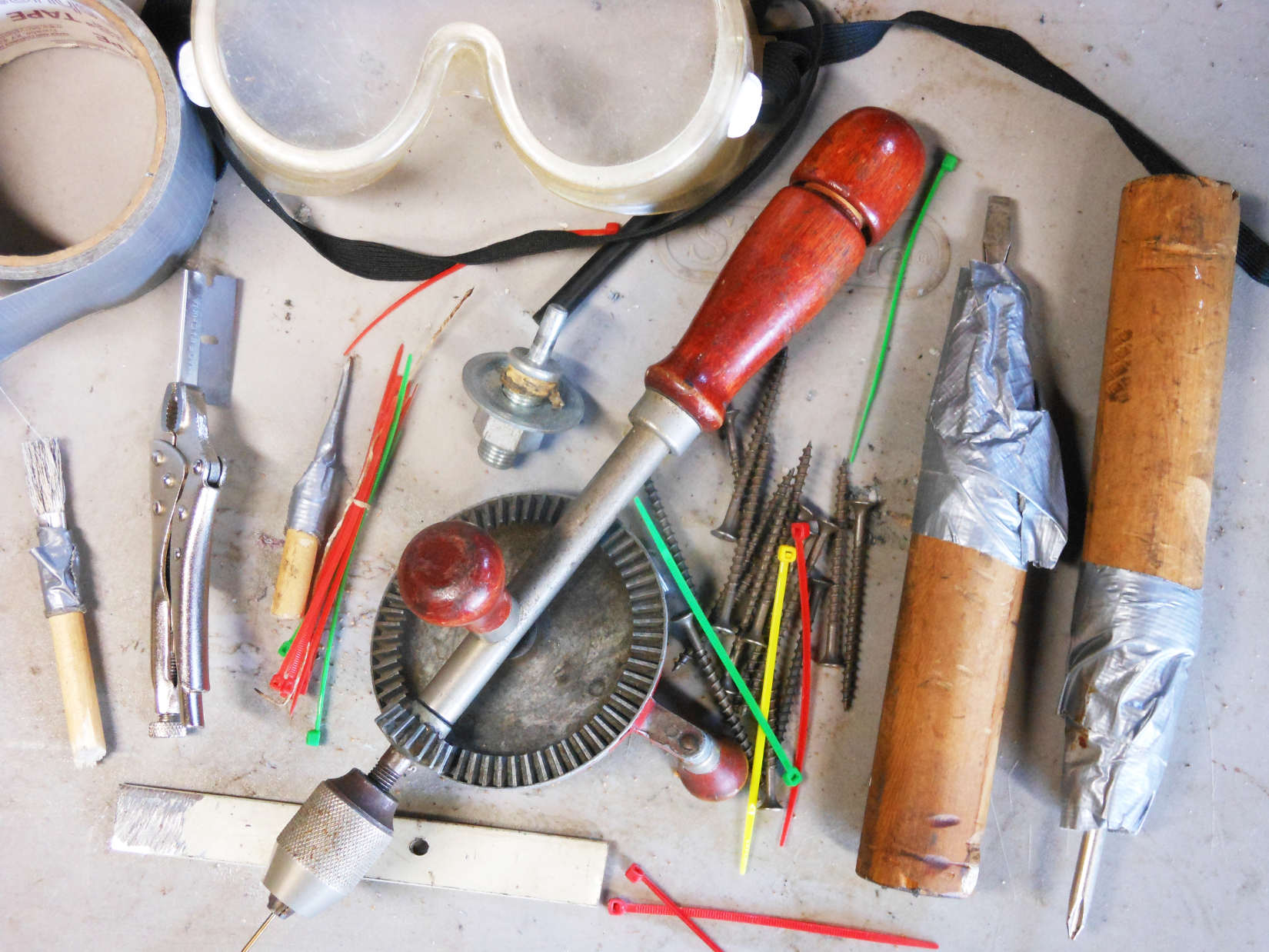
To be a well-known, bad-ass custom builder, you need thousands of dollars of fancy custom tools, right? Wrong! This is Ichiban Moto’s complete tool kit. If he needs anything else he can make it with these tools.
Are you worried somebody will hurt themselves trying something in your videos?
For every Ichiban video on YouTube there are 50 others documenting something even more unsafe. Ichiban does wear goggles and gloves and tries to do things safely. But a lot of people are alarmed and point out the danger. I tell them, hey, I’m wearing goggles and I follow instructions to a T. Plus, I do my research—if there are five ways to do something online, I pick the one that works and share it.
How are you funding Ichiban until you sell your first project?
I’m self-funding by selling the extra parts … The thing with café racers is there are a lot of good stock parts you don’t need or might be left over as you strip the bike to save weight. One thing Ichiban does is take parts off to sell those on eBay. I sold the pan of my king-and-queen saddle for $50. Fifty bucks is a lot—it’s enough to do all the bodywork and paint the thing when I’m done. I’m also helping YouTube fans out that send me parts to mod for them.
Why did you pick the name Ichiban Moto?
Ichiban—it means number-one of whatever. It’s about what I’m doing—there’s interest in creating and building and sharing with the moto-community. Ichiban believes that any motorcycle deserves a new life. Even if it has been abandoned in a field for decades or has a tree growing up through the engine. They can all be better—be lighter, go faster and look bad-ass. You don’t have to spend a lot of money: use what you have, use what you find and have fun doing it. One bike won’t have the material you need for your seat, but the next one might. Share your knowledge, and if you see someone doing something that might work, give it a try. If it works, make a video and share the knowledge.
Final pro building tips?
Green zipties last longer than red zipties. It’s true—I think I read it on Wikipeida. But there are thousands of good build threads—find what you think looks badass and copy it. If it works, make a video and share it.
At this point the interview ended. I found out later the guy from Ichiban Moto’s old station wagon wouldn’t start and he wound up waiting an hour for his wife to drive out and give him a jump.
For more Ichiban goodness, subscribe to the Ichiban Twitter Feed or the Ichiban Moto YouTube channel.
Gabe Ets-Hokin is the Editor of City Bike Magazine, and a frequent freelance contributor to MotorcycleDaily.com.
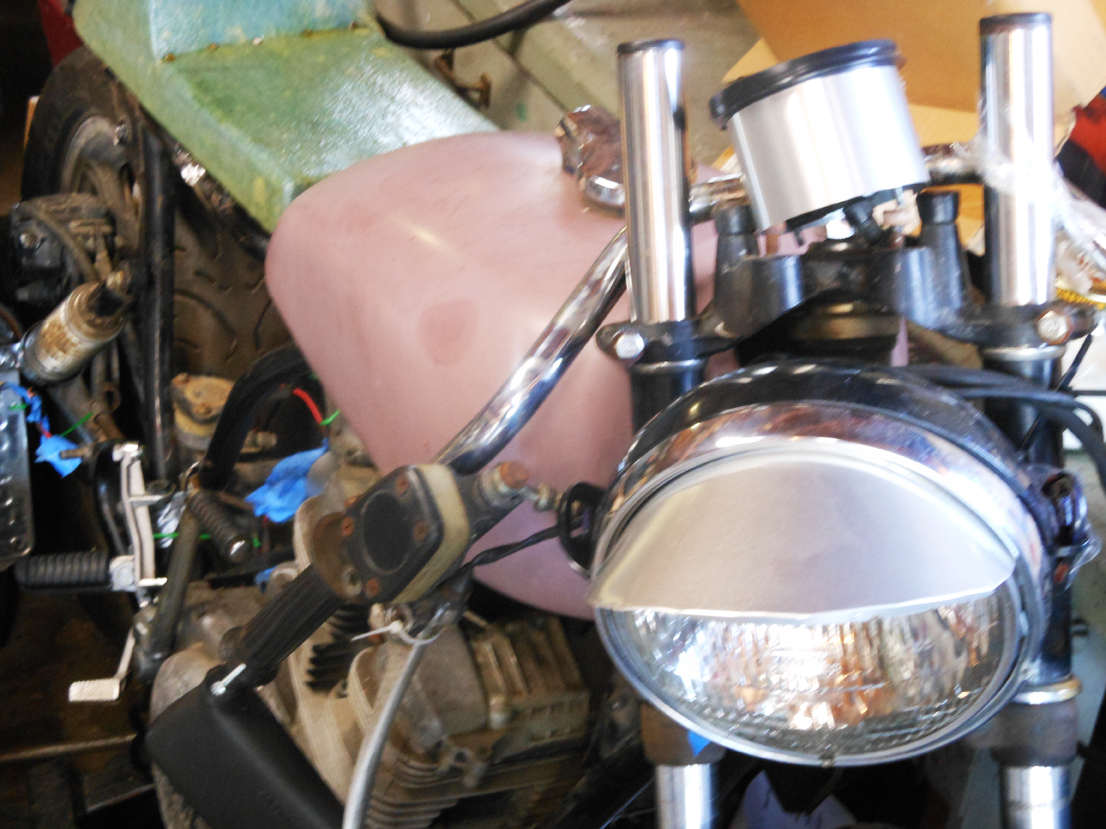
Meticulous attention to detale: evident in everything Ichiban does.
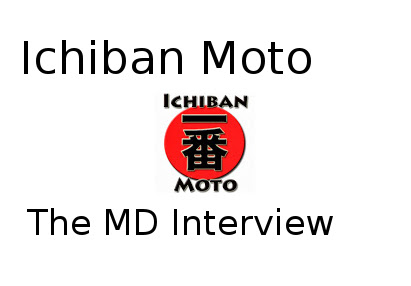
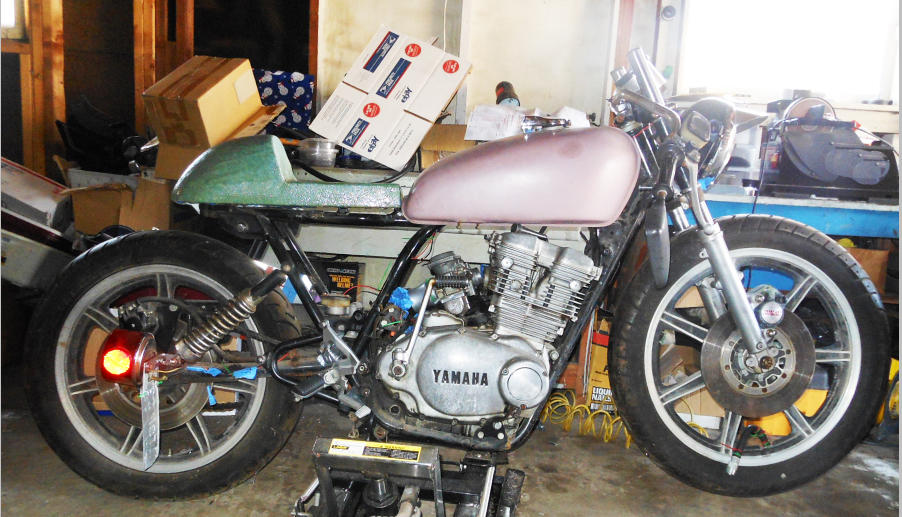






Dang it! Made it through April fools but passed this up a few days ago and thought I’d check it out today. Well done MD. Was just ridiculous enough that it sounded like some typical hipster nonsense and I fell for it.
I thought the whole thing was a joke until I got to the line “You don’t have to spend a lot of money: use what you have, use what you find and have fun doing it.”
“That will allow the customer to pick their paint color and when I learn how to do upholstery, they can pick the material. If they want leather, I have an old lady’s coat, for instance. If they want vinyl, I can source that (at this point he is running a practiced hand along the vinyl seat of our booth in the restaurant)…”
Digg the parenthesis. That light purple haze paint on the tank is sweet.
That 1978 Yamaha XS750 Special (triple) is a gem!
These are the most stupid looking ridiculous lame excuse for a bike and company that I have ever seen in… what’s that??? It’s what? What’s the date have to do with such a dumb looking… huh??? What do you mean it’s April first you dumba.. …. oh…. OH!
Brilliant ! Nothing this guy does will be outdated. Speaking of dates – anyone else notice the date this article was published ? Good one Itchy Bum….
Is California a recreational M-J state?? That would explain a lot..
At least he has a plan! (and a sense of humor)
Great to see MD getting into the spirit of the month… 😉
“Fernando Llamas once said—it is far better to look good than to feel good. And we all know that the reason we got into riding is to look good”…
“Vanity, definitely my favorite sin… ‘Devils Advocate’. 🙂
Like the concept…best of luck.
Better Fernando than Lorenzo, right? =P
I love it! This young man is going places. If only the OEMs would listen to him.
The sign of a true craftsman is minimal use of duct tape…bravo!
Magnificent. Inspiring. Can’t wait to build my own. If Yamaha could build one that weighs 100 lb., price it at $350.00, and build it in purple instead of pink, I’d go right out and buy it.